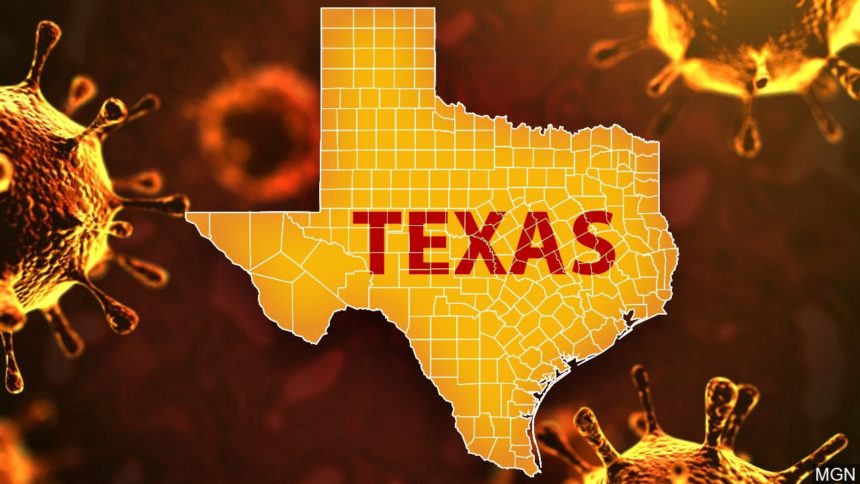Texas reports over 663,000 total virus cases as it prepares to change the positivity rate calculation

AUSTIN, Texas — Texas health officials on Monday reported 2,595 new cases of the coronavirus and 21 additional deaths.
The Texas Department of State Health Services said the total number of Covid-19 cases so far in the state is now at 663,445, while the death toll is now at 14,211.
There were about 3,300 people with Covid-19 hospitalized in Texas on Monday, health officials said. The number of hospitalizations has been decreasing since peaking July 22 at 10,893.
Health officials estimate about 68,000 cases in the state of Texas are currently active.
But those officials also announced Monday that Texas will change how the state reports the positivity rate after testing backlogs have skewed coronavirus data.
Officials conceded that the state’s previous method of calculating the “positivity rate” muddied the extent of viral transmission by mixing old data with new.
The Texas Department of State Health Services said it will now “primarily rely” on a new calculation of the daily positivity rate — defined as the share of tests that yield positive results — that takes into account the date on which a coronavirus test was administered. Officials said the new metric will give a more accurate representation of viral transmission in Texas on a given day.
It also means that each day’s positivity rate will be an oft-changing number, fluctuating as officials collect lab results over time. Labs and hospitals report their test results to the state with varying degrees of timeliness, and state officials will have to recalculate the positivity rates for previous days as more test results from those dates pour in.
That’s a departure from the current system, which calculates the positivity rate based on the date the health agency receives test results, which can be weeks or even months after the tests were administered.
It marks the latest in a series of data methodology changes and corrections health officials have issued over the course of the pandemic.
While touting the new reporting method as an improvement, state officials defended the old system as providing the best information that was available at the time. The new positivity rate for the most part closely resembles the old metric, particularly when viewed as a trend line over time, officials said.
Health department spokesperson Chris Van Deusen said in an email that the different positivity rates generally moved in parallel until about August, when the state reported dumps of test results. “As long as the test results and new cases were reported fairly close in time, the case reported date was working as a metric,” he said.
Asked if the health department had concerns about the accuracy of the positivity rate before August, Van Deusen said, “We have to go off of the data that we have.”
The state said it will begin releasing the positivity rate under both the new and old methods later Monday. Health officials said they will publish a third positivity rate metric, which is calculated based on when lab results were reported to a national disease surveillance system, NEDSS, which officials said would reduce reporting lag time.
In its announcement, the Texas Department of State Health Services said the new calculations for the positivity rate will provide a more accurate representation of coronavirus transmission on any given day. It said the change was made after technology improvements last month improved the department's ability to use data from labs and other testing sites. The agency said that until recently, it wasn’t able to track test results by the date they were administered.
The state can now process about 100,000 lab reports per day, officials said, compared with about 45,000 per day before August.
“As the Covid-19 pandemic evolves, so must the data we share,” Texas Department of State Health Services Commissioner John Hellerstedt said in a prepared statement. “Our information must provide the clearest possible picture of what is happening now and what has occurred in the past.”
Health experts have raised questions about the value of the old metric since it included test results from widely variable time periods, and they have pointed out the limitations of the state’s data.
“The numbers that we see from the county health departments or the state health department … they're not useless, but they are highly qualified and unreliable in terms of studying the trend,” Rajesh Nandy, associate professor of biostatistics and epidemiology at the University of North Texas Health Science Center at Fort Worth, has said.
Coronavirus test results vastly undercount the extent of viral transmission; researchers estimate that the true number of coronavirus cases could be more than 10 times the number of positive tests. As many as half of the people who contract the virus may never experience symptoms and may not seek out testing.
